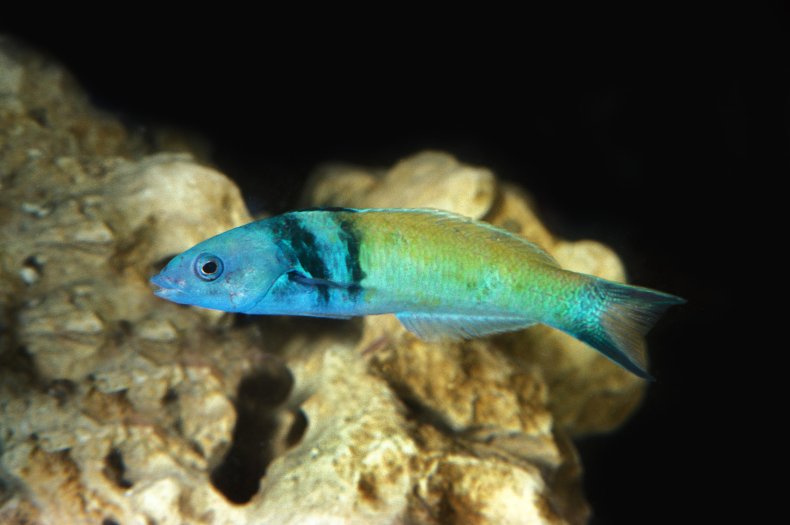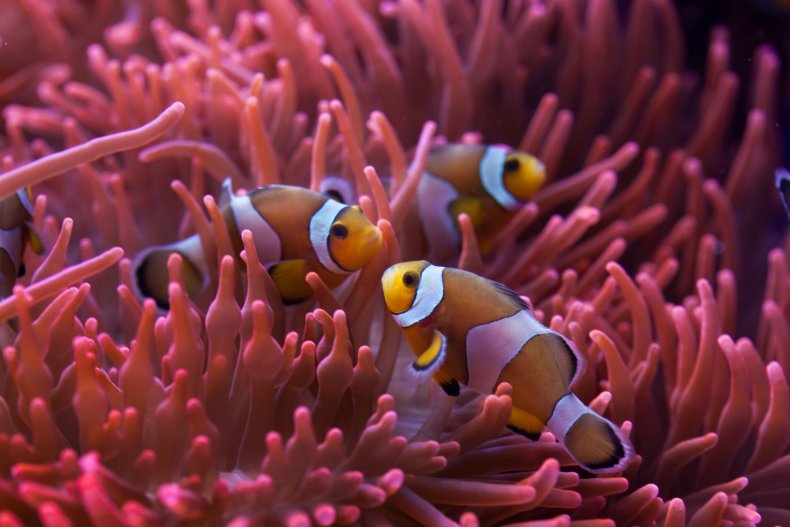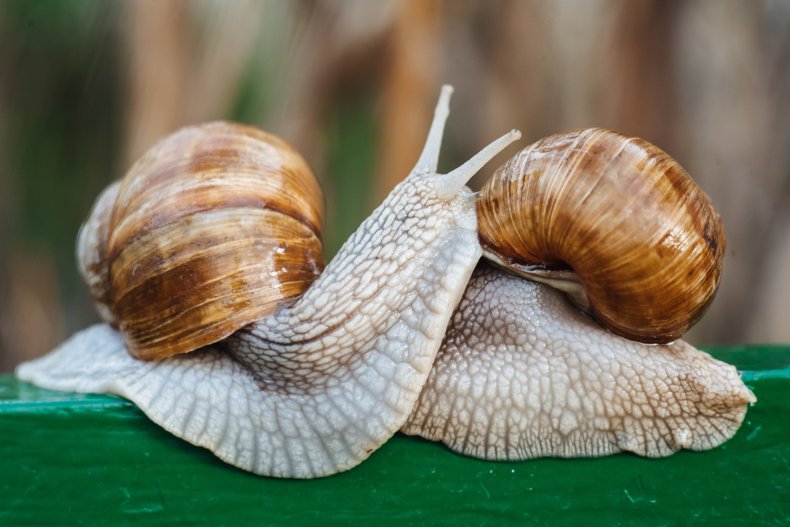The Species That Change Sex
The animal kingdom is a wonderful and wacky place filled with creatures with all sorts of unique abilities, ranging from walking on water, holding their breath miles beneath the ocean and even living in the vacuum of space.
One superpower that many species have is the ability to swap their sex at some point during their lives, changing from male to female and vice versa, or being a bit of both.
This is an ability of more species than you might expect: up to 5 percent of animal species are capable of switching sex, which equates to 30 percent of all non-insect species, El País reported.

These sex-fluid animals come in two forms: simultaneous hermaphrodites, which have both male and female sexual traits at the same time, and sequential hermaphrodites, which exist as males and females at different stages of their lives. The first category mostly contains invertebrates like worms and snails, while the second category is more widespread in fish and certain frog and reptile species.
"Sequential hermaphrodites are species where individuals are one sex and then change sex to the other sex (sequentially)," Stuart West, a professor of evolutionary biology at the University of Oxford, told Newsweek. "For example [some] shrimp are males first, and then change to sex to female, whereas many reef fish are female first and then change sex to male (e.g. the bluehead wrasse)."
The Pacific cleaner shrimp get their name as eating parasites and dead skin off other marine animals makes up most of its diet
— AnimalFactHub (@AnimalFactHub) November 26, 2021
All of them start as males but after a few moults will become hermaphrodite allowing them to function both male and female #animals pic.twitter.com/m8C57y2Azr
These individuals that change their sex are able to reproduce as both sexes, both before and after sex change. They also change their behavior to match that of their new sex, behaving differently before and after sex change.
"Species in which individuals begin life as males and then later change sex to become females—for example, anemonefish, like Nemo in the film Finding Nemo—are called "protandrous"," Andy Gardner, an evolution and natural selection professor at the University of St. Andrews in Scotland, told Newsweek. "Species in which individuals begin life as females and then change sex to become males—such as many wrasses—are called "protogynous".
Wrasses are a family of brightly colored fish.
The reason for this trait to have evolved is unclear, and may be different for each species that does it, but one suggestion is described in the "size advantage hypothesis."
The size advantage hypothesis states that changing sex is favored in species that reproduce more efficiently with one sex when they are young or small, and more efficiently with the other sex when they are older or larger.

"Sex change is favored when one sex gains a large advantage from being old," West said. "For example in the bluehead wrasse, males are able to hold harems of females. Only the biggest and largest males, who are the oldest males, are able to hold harems. This means that the fitness (reproductive success) of a male depends hugely on age—a young male would not be able to obtain a harem and so would effectively have no reproductive success, whereas an old (large) male would be able to obtain a harem with many females, and so have high reproductive success."
While the reproductive success of a female bluehead wrasse does increase with age and size, it does so to a lesser degree than if they were male.
"As a female gets bigger she can produce more eggs and so larger females do have a larger reproductive success, but small females still have some reproductive success," West said. "The consequence of these two patterns is that a young individual would have higher reproductive success if they are female, whereas an old individual would have higher reproductive success if they were a male. This has led to natural selection favoring sex change, where individuals mature as females, and then at a later point to change sex to male."
Past work in many species tells this story: sex-typical behavior changes quickly (w/in days or even HOURS of sex change onset) and is independent of gonadal hormones
— Coltan G. Parker (@ColtanParker) August 5, 2022
Researchers even removed gonads from fish (bluehead wrasse, pic below) and observed behavioral sex change!!
2/10 pic.twitter.com/YOsY1dDHnv
Sex change in the other direction, from male to female, can be favored if females gain more from being older and larger, which also occurs in other species. These changes are also dependent on the social dynamics of the population.
"From a Darwinian perspective, sex change may be adaptive when the relationship between an individual's size and their reproductive success differs between the sexes," Gardner said. "For example, if all female fish within a population have much the same reproductive success irrespective of their size but only the very biggest males succeed in reproducing at all, then it might pay for an individual to start life as a female but then change sex to become male once they have grown to a large size. There may be a social dimension at play, so that the death of the largest individual in the neighborhood induces the second-largest individual to change sex, rather than sex change occurring automatically upon the individual reaching a particular size."
There may also be a number of other factors at play that trigger individuals to swap sex. Other reasons for members of a species to switch sex may be because the population is skewed towards there being a lot more individuals of one sex, for example in common reed frogs, which were found in a 1989 study published in the journal Copeia to switch from female to male.

"Sex change can be triggered in many different ways. In some species it could be age. In other species it could be local environmental cues. For example, in some fish where groups consist of one male and a number of females, if that male is removed then the largest female changes sex to male," West said.
One characteristic example of this is in the clownfish, also know as the anemonefish, immortalized on film as the anemone-dwelling Nemo. In clownfish groups, if the dominant clownfish female leaves or dies, the dominant male will switch sexes, become female, and take her place.
Some species (66 species of fish, to be exact) can even change sex in both directions, switching one way and then switching back again, for example, in the orange-red pygmygoby or Okinawa rubble goby (Trimma okinawae). In this species, if the dominant male dies, one of the females becomes male to replace him and mate with the other females, but can switch back if a larger dominant male moves into the group.
"Species in which individuals are able to change sex repeatedly throughout their lives are termed "bidirectional hermaphrodites"," Gardner said.
Their ease of switching back and forth comes from the fact that females of this species have active ovaries and inactive testes, producing a hormone to activate the testes and deactivate the ovaries. Other species undergo much more irreversible body changes, however, meaning that their sex cannot be changed back.

Simultaneous hermaphrodites, which are a bit of both, often have functional male and female reproductive organs at the same time.
Simultaneous hermaphrodites are organisms in which the same individual has both male and female reproductive organs and has the capacity to produce both male and female sex cells—for example, sperm and eggs—at the same time," Gardner said. "Slugs and snails are often simultaneous hermaphrodites, and may even take part in reciprocal mating, with one individual's sperm fertilizing another individual's eggs at the very same time as the second individual's sperm are fertilizing the first individual's eggs."
I am reminded, for no particular reason, of the flatworm
— Dr Adam Rutherford (@AdamRutherford) March 1, 2023
Pseudobiceros hancockanus.
It is hermaphroditic and engages in penis fencing: each worm attempts to inject sperm into the other with one of its two stubby penises, while trying to avoid being inseminated itself. pic.twitter.com/17jOmP39XR
Other species will compete to determine which individual acts as the "father" when they mate, such as some species of flatworm, which will undergo "penis fencing". Eventually, one will stab their penis into the abdomen of the other, winning the match and fertilizing the other. There are even some species that will fertilize themselves, such as tapeworms.
As with much of biology, therefore, the reality of the world isn't quite as black and white as we might initially think.
Do you have an animal or nature story to share with Newsweek? Do you have a question about animals switching sex? Let us know via science@newsweek.com.








